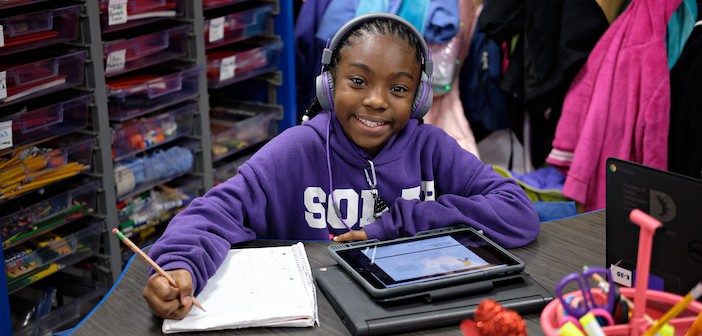With national studies showing students falling behind academically due to the Covid-19 closure of schools, Dallas ISD administrators briefed trustees on Aug. 13 on the district’s efforts to mitigate learning loss.
“We are now facing conditions where students have not received instruction in a classroom environment for six consecutive months,” Chief of Staff Pam Lear told trustees. “The research is disturbing, and we need to prepare to address it in the short term and long term.”
From expanded access to digital learning tools and ongoing progress monitoring to strong on-grade level instruction and tutoring supports, Chief of School Leadership Jolee Healy said that comprehensive plans are in place this school year to mitigate learning loss and accelerate student growth. Meanwhile, Healey and Deputy Chief Academic Officer Derek Little also discussed potential long-term strategies to increase learning time in the 2021–2022 school year for some or all elementary students.
Potential long-term strategies
House Bill 3 offers additional funding for districts that add learning time for elementary students. The half-day funding for grades pre-K–5 is for up to 30 days beyond the normal 180 days of instruction.
Healey and Little told trustees that the district is exploring three different potential options for the 2021–2022 school year that would add learning and enrichment time for some or all students. Healey and Lear said extensive feedback and input from all stakeholders–including teachers, parents, trustees, community and education partners–will guide the district’s long-term strategy.
“What will be critical is that we engage in a highly transparent and collaborative process and also include the investigation of other programmatic innovations,” Healey said.
The three options being considered are:
Option 1: Enhanced Summer Learning
Under this option, there would be no change to the base school calendar, but an additional longer summer session for targeted elementary students. This option would expand summer school offerings, increase targeted remediation efforts prior to the start of the following school year, and potentially reduce the summer learning loss for some students.
Option 2: An intersession calendar
Under this option, the school year would start earlier and end later, but only targeted elementary students would attend additional days. This would increase targeted remediation efforts throughout the school year, increase planning time for teachers throughout the year, and potentially reduce summer learning loss for all students through a shorter summer break.
Option 3: A full year redesign
Under this option, there would be a longer school year for all students with additional breaks added throughout. The district might designate which students would attend for some of the additional weeks, giving other students additional breaks. This would increase instructional time for students and planning time for teachers while also potentially reducing summer learning loss for all students through a shorter summer break.
Moving forward
After a robust planning and feedback process, the goal is to have a proposal to bring before the board in December. Trustees must approve any changes to the 2021–2022 school year calendar.

